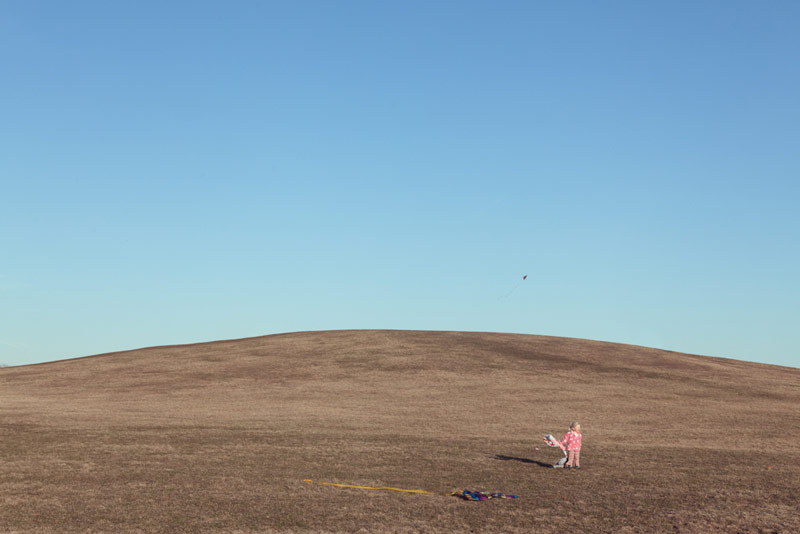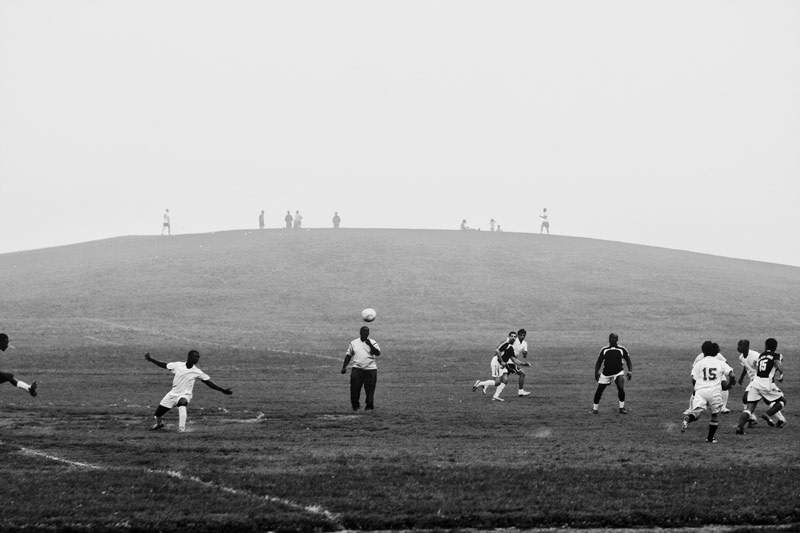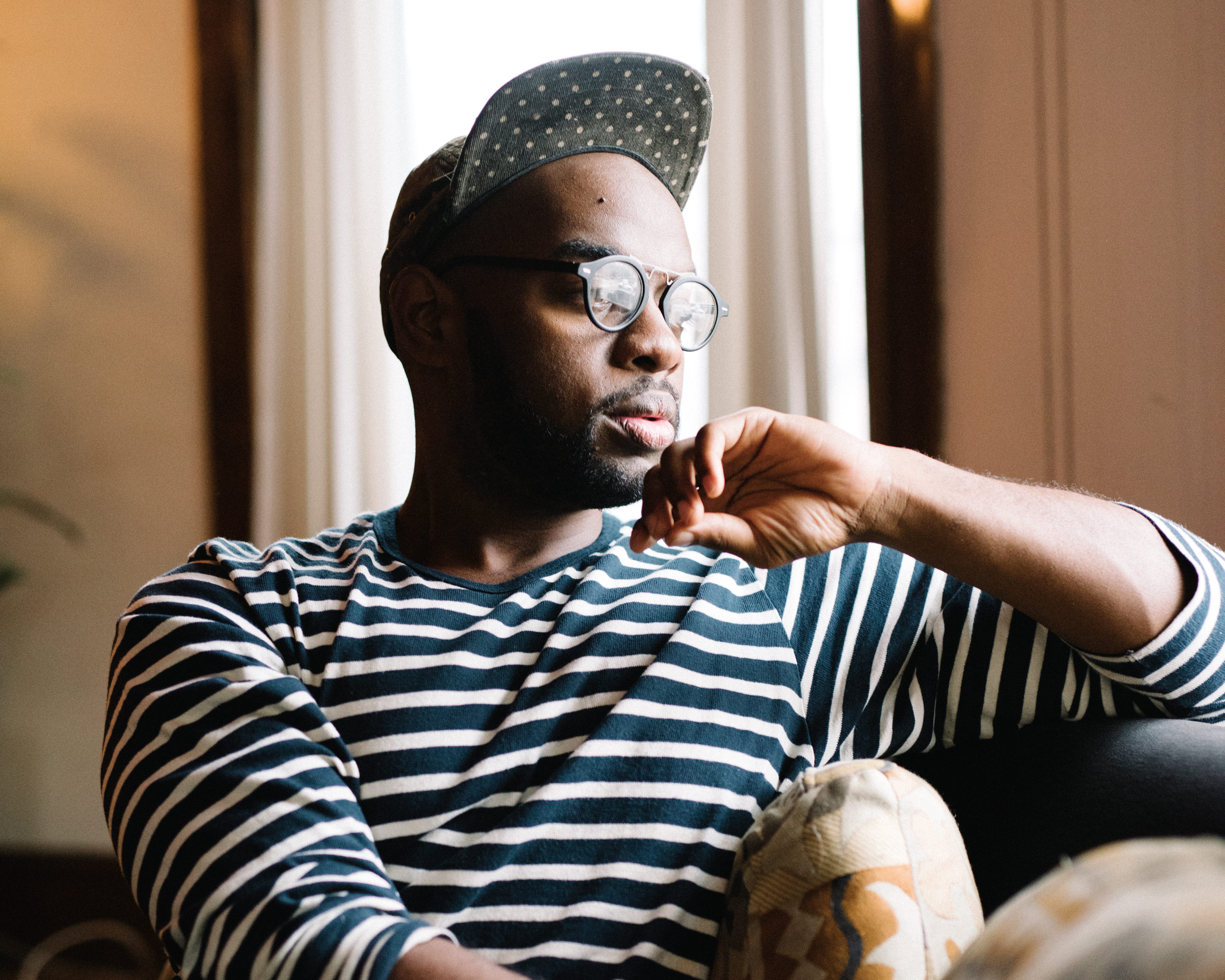
- Interview by Tina Essmaker May 20, 2014
- Photo by Ryan Lowry
Paul Octavious
- designer
- photographer
Paul Octavious is a Chicago-based photographer and designer. He has done work for Nike, Wired, Print, the Wall Street Journal, Mercedes, Hermès, and the New York Times, among others. His work has been featured by the New Yorker, the New York Times, swissmiss, Huffington Post, the Paris Review, and The Fox Is Black. He is represented by tinker street*.
Interview
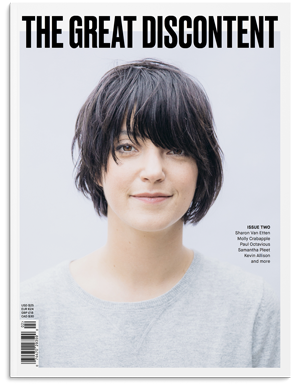 Editor’s note: An updated version of this interview, including new images and work, is featured in print in The Great Discontent, Issue Two, available in our online shop.
Editor’s note: An updated version of this interview, including new images and work, is featured in print in The Great Discontent, Issue Two, available in our online shop.
Describe your path to becoming a photographer?
I knew I would do something in a creative field because, somehow, I was always involved in the arts when I was a kid. I took a lot of art classes and enjoyed using computers to design t-shirts with clip art; in high school, I played in the marching band as a drum major and sang in a traveling choir.
My first experience with a camera was when I was five years old and my mom bought me a Mickey Mouse Polaroid camera. We were living in Bridgeport, Connecticut, and Hurricane Andrew had just come through, knocking down a huge oak tree in our front yard. Once the storm passed, I asked my mom if I could go outside and take photos with my camera. My mom replied, “Don’t drop your camera,” and I thought, “I’m not going to drop it—I’m five.” I walked outside and, as soon as I saw the tree, I immediately dropped the camera into a puddle of water. I could feel my mom’s breath on my neck from 20 feet away. That one moment made me afraid to touch another camera until I was in college!
I knew I would go to college, but didn’t know how’d I get there. My sister and I were around the same age, and I went with her to a college fair one day. That’s when I found out about an area of study that merged art and computers: it was called graphic design. I didn’t know there was such a thing, and finding that out changed everything for me. I realized that that was what I wanted to do, so I went to Central Connecticut State University to study design.
During my first year of college, I told my teacher that I used clip art. He replied, “We don’t use clip art, we make clip art.” It was surprising to learn that I could create something original instead of using something made by another person—and that was the idea that led me to photography.
In 2005, during my last year of college, everyone in my class was scanning and using the same stock imagery book whenever we needed visuals for an assignment. For instance, if we worked on a project for apple pie packaging, everyone used the same photograph of an apple. I wanted to create my own original stock photos, so I decided to buy a camera—once I started taking pictures, I never put the camera down. That is how I fell in love with photography.
Approaching graduation, I still needed about six more credits to graduate. At the same time, my grandfather, who had Alzheimer’s, had moved in with my family. My parents were trying to decide who was going to stay home and take care of my grandfather. By that time, I had all the skills I needed to design, so I volunteered to stay home and watch Grandpa rather than going back to college for the summer. Since I had less than nine credits to complete, which I had planned to take that summer, I was allowed to walk across the platform with my graduating class. In that sense, I did “graduate” and my parents got to see me in my cap and gown.
After that, I started working from home as a freelance designer and I picked up freelance photography jobs here and there. Soon after, I was hired as an in-house photographer for Threadless. At the time, they had a deal where, if you bought a t-shirt and posted a photo of yourself wearing it, you were given five dollars off of your next purchase. I did that enough times and took good enough images that I gradually developed a rapport with them. In 2007, I was hired by their parent company, skinnyCorp, to move out to Chicago to work as an in-house photographer. It was amazing!
“…I went with [my sister] to a college fair one day. That’s when I found out about an area of study that merged art and computers: it was called graphic design. I didn’t know there was such a thing, and finding that out changed everything for me.”
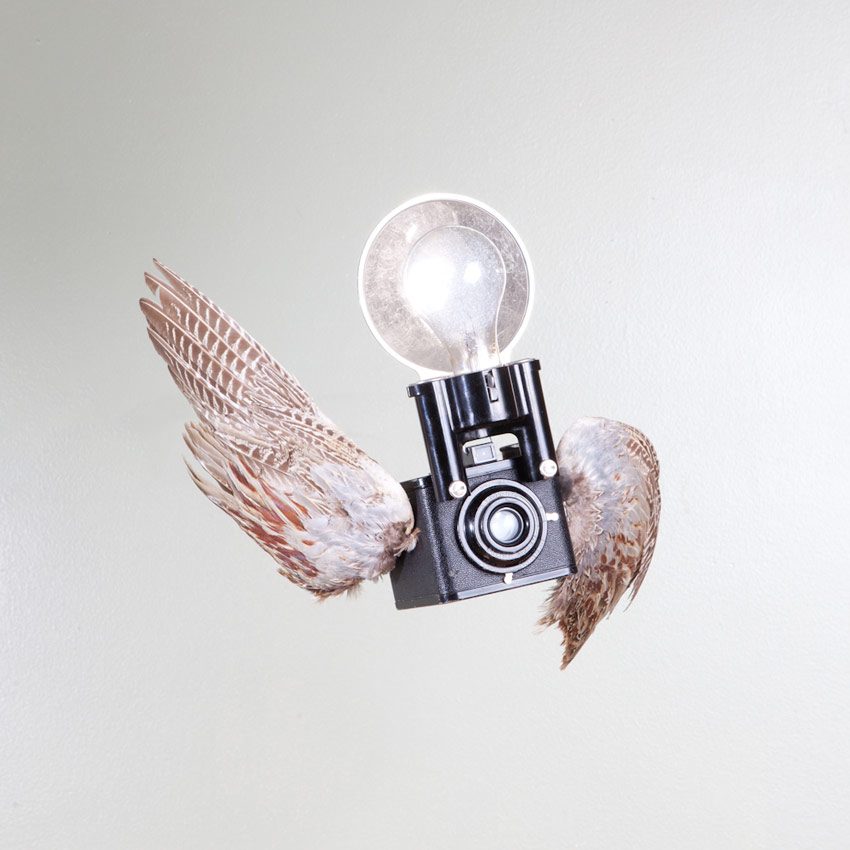
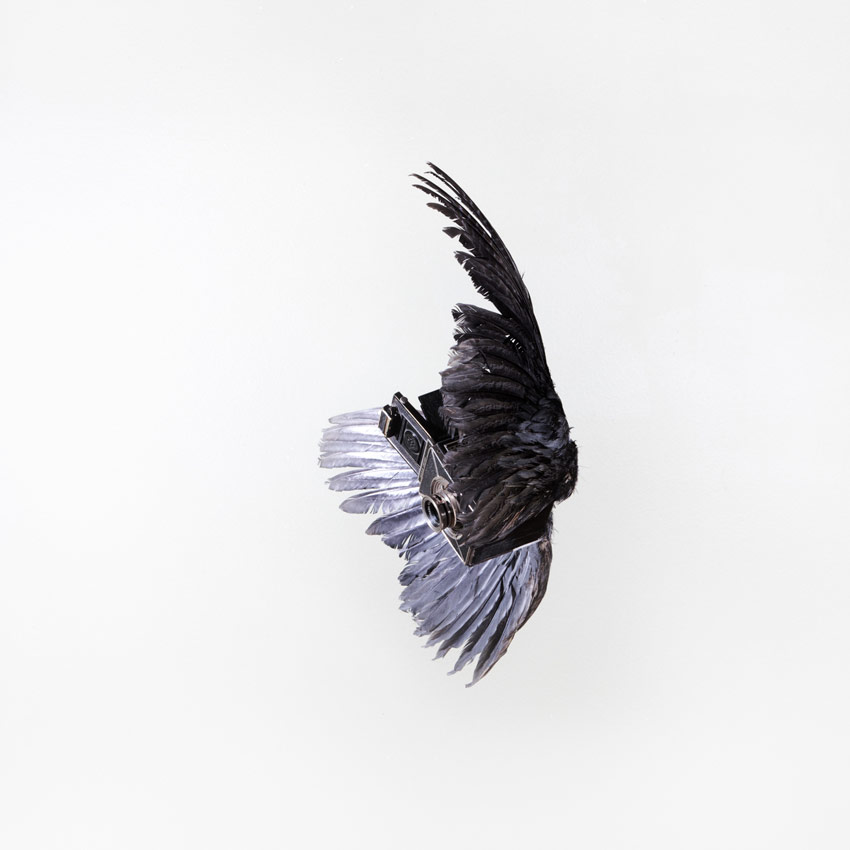
Was that your first official photography job?
Yes, that was during the infancy of my photography career. It was a great job to have right out of college.
Before I worked at Threadless, I had been experimenting with photography and posting my work on Flickr. The images I posted were all personal photos, not work for a company, and they received good responses from a lot of people. Once I began working at Threadless, I had a hard time making images because it felt very robotic. As a photographer, it’s important for me to keep up a high caliber of work, so having to make every image look the same was difficult for me. It started to feel machine-like because I was producing the same images over and over, and I chose to leave my job at Threadless after four months.
I didn’t want to move back home to Connecticut and live with my parents, so I decided to become a full-time freelance photographer. Failure wasn’t an option. I just had to do it.
So you’ve been freelancing ever since?
Yes. A lot of opportunities came out of that time, and it was a good period for me to experiment with my craft. I received unemployment benefits for a bit, so it was like a golden age for my photography: I was still looking for a job, but I was fun-employed. It felt like I’d being given a grant to try and make something work out within that short span of time.
I started making up personal projects and posting the results on the Internet. The more work I put online, the more people started to notice. I wasn’t trying to convince them to share my work—it was just for me. I wanted to show people what I was making for myself, but whenever people shared my photos, it became like a marketing campaign. This was when social media platforms, like Twitter and Facebook, were brand new, so blogs were key for sharing my images. As I continued creating new work, art directors began to see it and ask, “How can you translate your work into a vision for our product?” And that was how I started working with bigger companies.
What was the first big company that approached you for work?
McDonald’s was the first to approach me. At first, I thought, “It would be weird to take pictures of food,” but it wasn’t for food photography. McDonald’s has a $100,000 scholarship for Hispanic students, and they wanted me to do photography for the ad campaign. At the time, I had been taking photographs of books, stacked up in the shape of numbers, and McDonald’s had taken notice. They hired me to spell out a quote with multiple objects, not just books, and it was a lot of fun. That was my first big project.
What kind of work are you doing now?
I tend to shoot commercial and editorial work and, as of late, I’ve been shooting mobile photography for brands on Instagram. I’ve done a lot of commercial work with my big-boy camera—my Canon 5D—but the avenue for marketing and advertising has changed drastically. For instance, the biggest job I worked on last year was for Mercedes, who hired me to go on a road trip with a friend in one of their newest cars. What made this car special was that it wasn’t on the market yet—it was the only one on the road in the US at the time. There were five of us in total, posting images from our trips to Instagram, and whoever garnered the most likes won the car. As a professional photographer, I was still making the same rates I would have if it had been a commercial job, but it was an interesting marketing idea. It was nice to see that change in the field.
I also mentioned that I’ve done mobile photography for brands on Instagram. For example, iHeartRadio flew me out to Vegas to cover their three-day concert event last year. It featured big-name artists like Miley Cyrus; even though I’m not necessarily a fan of her music, it was surreal to have access to people like her and to be able to photograph them from a foot away. I have had great opportunities like that, and it’s been a lot of fun.
You already mentioned being interested in the arts from an early age. Was creativity part of your childhood otherwise?
Totally. My grandfather was an amateur photographer, and my mother is very creative. I remember coming home from elementary school around Christmas time and seeing her using a Brillo pad to scrape enamel off tree ornaments so they were clear enough to put our baby photos inside. She was always doing projects like that. Whenever I had to work on a crazy science fair project, she helped me build them, and they were the best.
Was there an “Aha!” moment when you realized photography was what you wanted to concentrate on instead of design?
The year before I left for Chicago, my grandfather was diagnosed with Alzheimer’s. I spent a lot of time with him, and that actually helped me become better at photography because I was taking so many portraits of him. I used him as a model, playing around with different lighting, and posted the images online. When I posted photos to my blog or Flickr, people responded well and shared them. That’s when I realized, “Oh, people like this.” The “Aha!” moment was playing around and realizing that I could make art with photography instead of only using it to create stock imagery.
Do you still have any of those photos of your grandpa?
I don’t know if I still have any of the hard drives that those images were on, which is sad, but they’re all on Flickr. Actually, the day I bought my camera was the same day I joined Flickr, so my whole photography career is on the Internet—my original username was “dunny.” You can see the very first image I ever took, all the way up until the latest image I’ve posted on my Instagram. It’s weird and awesome at the same time.
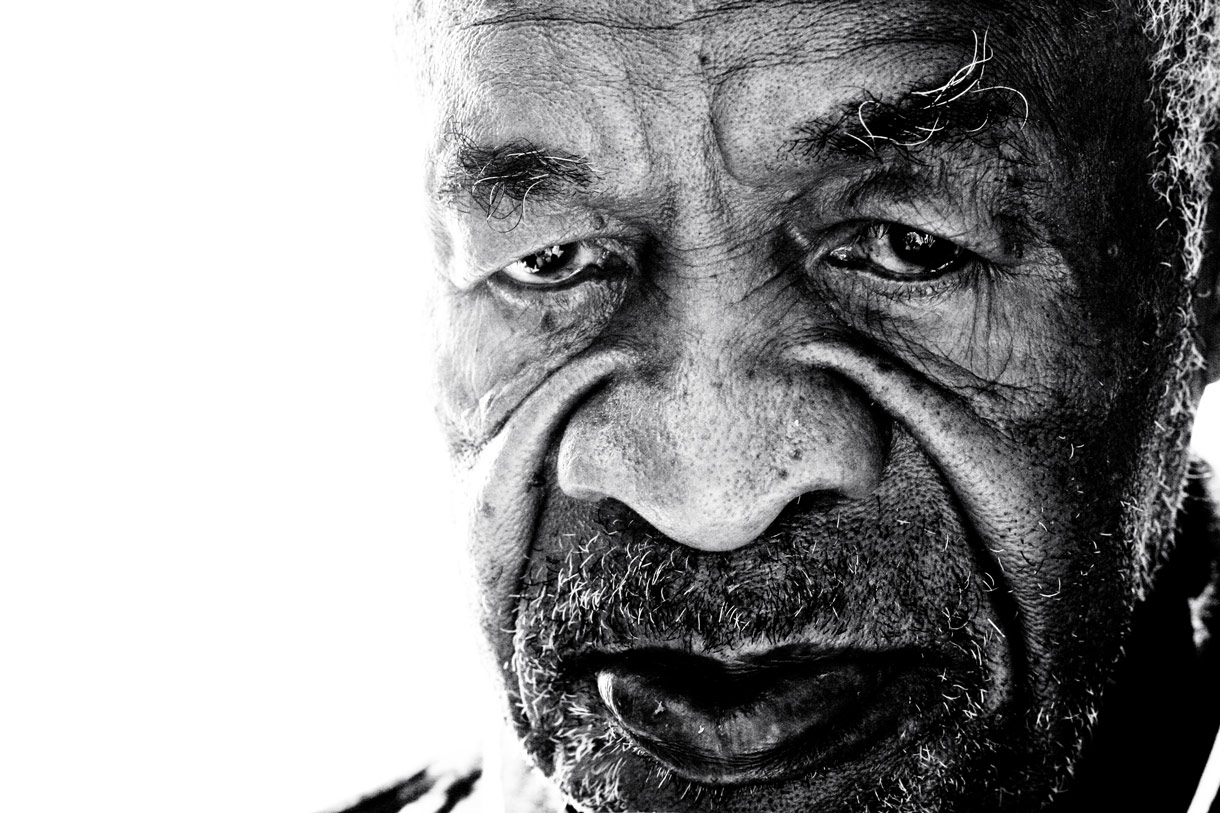
“The year before I left for Chicago, my grandfather was diagnosed with Alzheimer’s. I spent a lot of time with him, and that actually helped me become better at photography because I was taking so many portraits of him.”
Have you had any mentors along the way?
Not really. I am mostly self-taught. For me, it’s been more about hunkering down, learning, and having fun with this craft. I think that’s what has helped me develop my sense of style: I didn’t know what I was doing, so I made it up on the go, just to see what could work. I had a childlike curiosity about it, which has helped separate my work from other photographers.
My early days on Flickr helped a lot, too. I joined a group called Project 365, which challenged users to post a new photo of themselves every day for a year. I think I only made it up to 200 days, but it inspired me to keep the caliber high on whatever I was photographing that day. Some of my better-known projects, like Puffin Clouds, started because of Project 365. That’s what helped me develop my style before I moved to Chicago: I gave myself little assignments within the Flickr community to see what would stick. In a way, Flickr was my mentor. (laughing)
I love that all of your paid work came from doing self-started assignments.
Actually, none of my paid work is on my website. That may change in the future now that I have an agent, though. However, I have so many people following my work on Instagram that I can showcase my photographic voice that way. It’s been great.
Has there been a point when you’ve decided to take a big risk to move forward?
Leaving my job at Threadless to freelance full-time was a risk. While I was working at Threadless, I used all of their equipment because I had left my computer in Connecticut and had accidentally broken my personal camera. Unfortunately, when I left Threadless, I had to return their camera and have my parents ship my huge G5 Mac computer to me in Chicago. I was so excited when my computer finally arrived on the UPS truck because I hadn’t had a computer in months. But when I looked outside, I saw the UPS man slam the box on the ground as he unloaded it. When he walked up to me and asked, “Hey, is this for you?” I replied, “Yeah, that’s my computer.” He then replied, “Did you get insurance?” I brought the package inside and the whole bottom of the machine was bent. It was heartbreaking.
That following month, my parents were planning to come visit me in Chicago. Instead, they mailed me a new camera and computer, and they told me, “You need these more than you need to see us. You have to start your career.” From then on, nothing stopped me.
That’s awesome. It sounds like your family is really supportive of what you do.
Yeah, I have great parents, and they love seeing what I do and make. It’s weird when they’re with me and people recognize me on the street, though. I’m pretty recognizable: I’m a black guy with a crazy hat. (laughing)
About two years ago, I went with my parents to Ann Hamilton’s Event of a Thread exhibit in New York. I had posted about it on Instagram the day before, and people saw that. When I went to the event the next day, people were stopping to talk to me, telling me they had found out about the event because of my photo on Instagram. That was a testament to the power of Instagram in its early stages. Also, my parents hadn’t ever seen people come up to me like that. I wasn’t weirded out by it, but my mom kept taking photos whenever someone came up to me! I tried whispering to her to stop, but she said, “It’s amazing that people know who you are!”
“…I didn’t know what I was doing, so I made it up on the go…I had a childlike curiosity about it, which has helped separate my work from other photographers.”
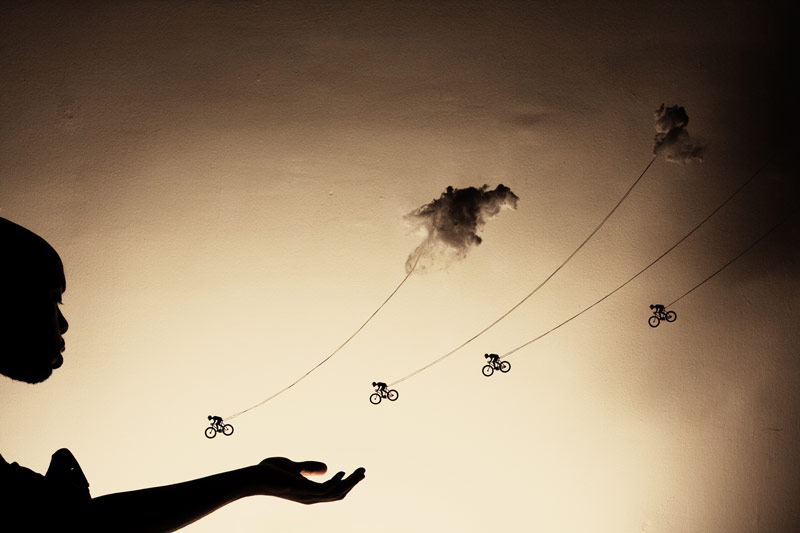
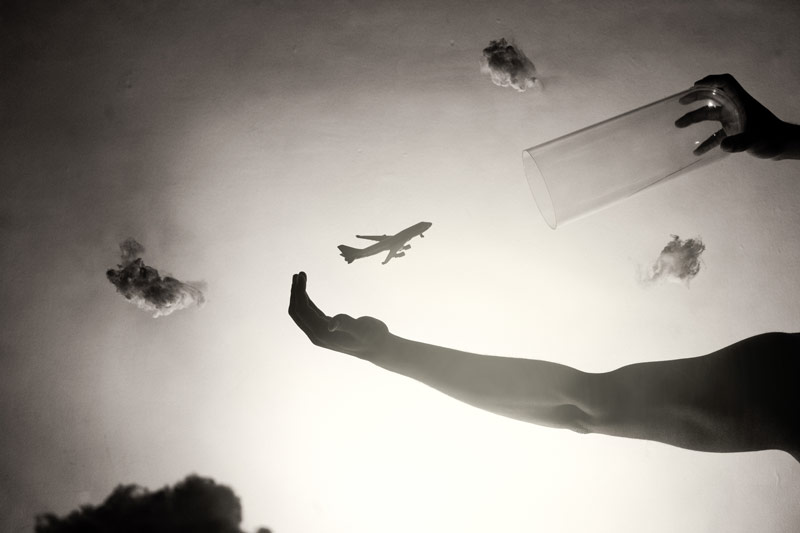
Did you parents worry about your ability to make it as a freelancer?
They never questioned it. They have always let me do whatever I want to do. If something makes me happy, they support it. They knew I had a gift for photography, and they knew I loved to do it. They chose to show their support by giving me equipment.
My family has a freelance mentality, too: my dad is a chauffeur, my brother is a DJ, and I’m a photographer. With those jobs, we’re all just trying to go for it and make something happen.
You also seem to have a great community of photographer friends around you.
Yes, I have great photographer friends and great designer friends. I remember the exact moment when people like Tina Roth Eisenberg of swissmiss blogged about my work, sharing it with designers because of its design-like and conceptual nature. Then Bobby Solomon from The Fox is Black and Christopher Jobsen at Colossal began writing about my work. These design type blogs started sharing my work with the design world, so I made friends with a lot of designers.
I also did Phoot Camp with Laura Brunow Miner, which created a huge friendship network of photographers. Once she finished at JPEG Magazine, she had started her own blog and asked me, “Wouldn’t it be interesting to get a group of photographers together to shoot with one another?” I said, “Yeah, I would be a part of that.” A bunch of us met up in San Francisco, and I made some amazing friends that way. Now, I have a whole new way of discovering cities because I have a bunch of photographer friends who can show me all the best spots.
Do you feel a responsibility to contribute to something bigger than yourself?
Yes. Sometimes when I take personal photographs, I think, “What is this actually doing for society?” I do feel a need to do something more, so hopefully I will find that purpose one day.
Have you had any opportunities to contribute through your commercial work?
Yes, actually. I love working with kids. In the six years prior to moving to Chicago, I was a YMCA summer camp counselor. Now it’s fun because I get emails from elementary school photography clubs here in Chicago, asking me to come hang out and take photographs with them. I’d also like to work with kids in other countries who don’t have access to cameras, or who don’t know what photography is, and teach them about it. That would be amazing.
Are you creatively satisfied?
I’m trying to become creatively satisfied. Last year I worked on other people’s dreams, but this year I’m working on my dreams. I get a lot of happiness from work projects, but I get a lot more from working on my personal projects. It’s nice to go back and put a new spin on photos that I haven’t touched in years.
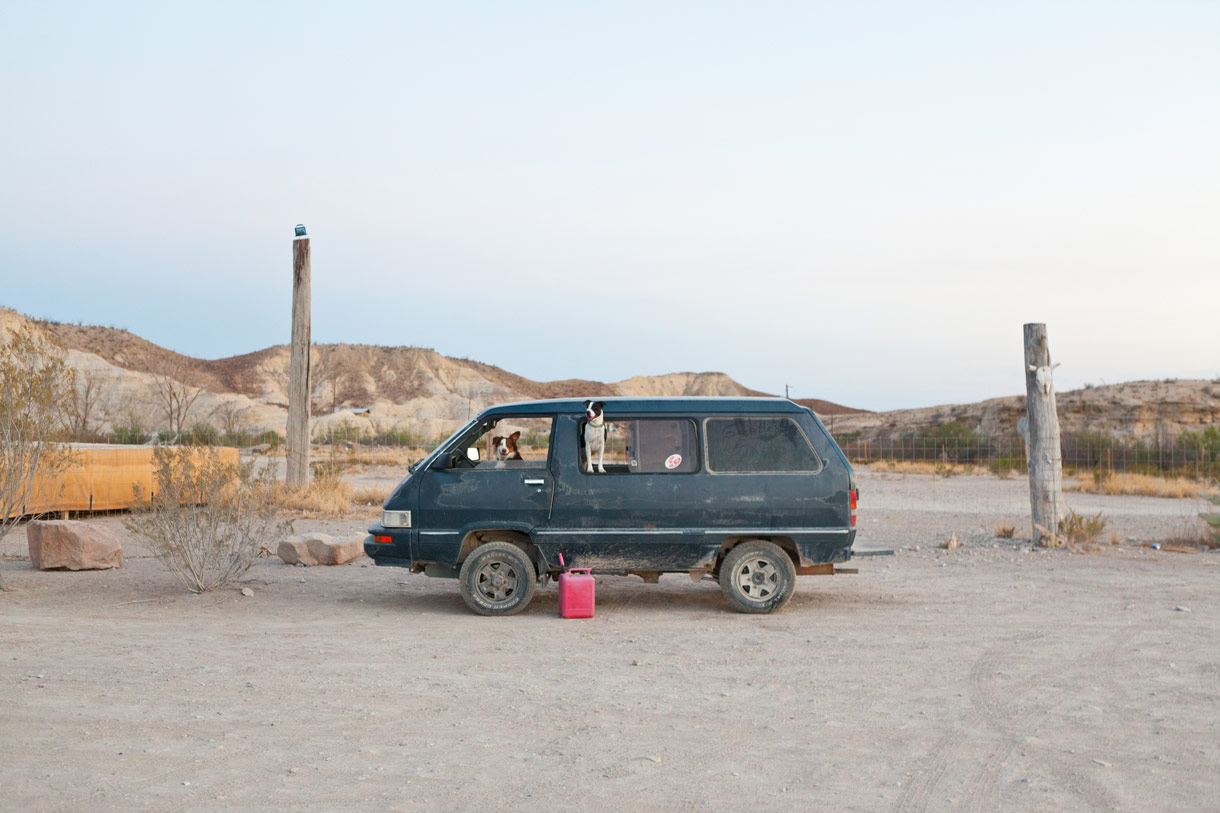
“I’m trying to become creatively satisfied. Last year I worked on other people’s dreams, but this year I’m working on my dreams. I get a lot of happiness from work projects, but I get a lot more from working on my personal projects.”
What kind of personal projects are you focusing on now?
I want to get back into the experimentation phase where I’m not necessarily using the best stuff, but I’m using what works at the time. For instance, I can’t wait to retouch my Puffin Clouds series. I haven’t touched it in so long. With the new equipment I have and my improved Photoshop skills, I wonder, “How did I even make that?” I made it because I had lots of restraints. For example, I didn’t have proper lighting, which means as I revisit the series, I can only use improper lighting. The photos won’t have the same flair with expensive lighting.
I’m excited about going back to projects like Same Hill, Different Day. This year, I want to create my own scenarios on a hill, because everything up until now has been random, sporadic moments. I have big ideas, but the hill is under construction right now. (laughing) I came up with all these ideas one day and thought, “I’m going to call the parks department to get a permit, and it’s going to be amazing!” But when I found out that they’re building a track in front of it and everything is gated off, I thought, “Noooo!” I’m going to have to hold off on that project for now.
A lot of my projects are ideas I just come up with on the fly. Like I mentioned earlier, I like collecting objects. My home is full of items like bows and arrows, taxidermic wings, and anything I’m attracted to. I buy items without knowing how I’ll use them until I see what I can come up with. That’s kind of my thought process.
Will you be taking any time off to work on personal projects?
I’ve been continuing to work on client projects while I work on my own projects. Actually, I just had my brand identity done. Logos are so hard to come up with for yourself, so I had an Austin-based illustrator named Keith Davis Young create some amazing branding for me. I’m so excited to have a new website with new work and have everything feel fresh again. But it’s so much work.
Yeah, when doing work for other people, you tend to neglect your own stuff.
It’s such a big task that you kind of have to force yourself to get back into that mindset. I just need to sit down and do the work.
What advice would you give a young person starting out in photography?
You must experiment. In school, the best lessons are what you learn outside of the classroom environment. It’s the stuff you do on your own, for yourself.
Keep on experimenting: that was the only way I was able to find my voice. Discovering your voice is the best feeling, but it really sucks when you’re aggravated about trying to find it. People say, “Good artists copy; great artists steal,” but it doesn’t mean steal—it means getting inspired by other people’s work. Even if you see someone’s work and want to try the exact same thing, try it, but never post it. And if you do post it, try to put your own spin on it. Experiment, find your voice, and don’t be afraid to try something different. That’s how you learn.
“You must experiment. In school, the best lessons are what you learn outside of the classroom environment. It’s the stuff you do on your own, for yourself.”
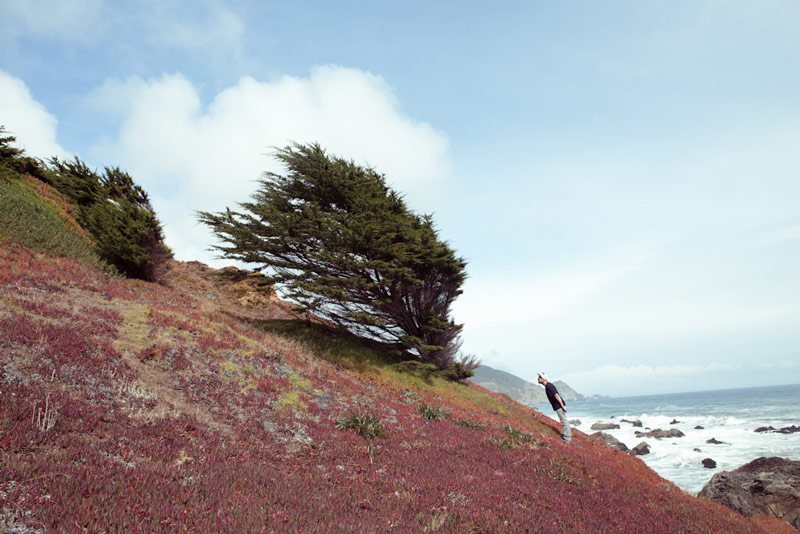
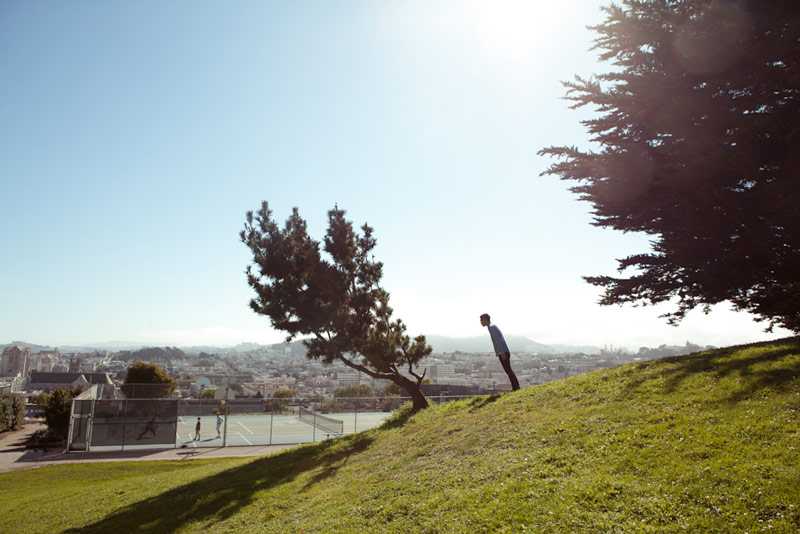
How does living in Chicago influence your creativity?
I travel often, but living in Chicago has been amazing. This city is absolutely beautiful, and the people here are great. I live near Lake Michigan, but it’s like living by an ocean. Also, having all four seasons is inspirational because I can do a photo project and see it evolve throughout the year. Going outside to a hill, or a tree, or taking one subject and revisiting it multiple times inspires me to see how I can photograph it differently each time.
You travel often. How does that influence you?
Being exposed to new experiences inspires me. Now that I can keep an inspiration diary through Instagram, I can more easily share my work and experiences, and be influenced while I travel. Before, I would take photos on my 5D and spend a lot of time uploading all the images. The task of uploading, editing, putting images into folders, and posting them on a website takes a lot out of you. Now I can shoot with my iPhone and immediately post photos to Instagram.
It’s nice having all my photos together in one place. When you take so many images, it’s so hard to keep track of them: I might have 100,000 images that are all on different hard drives. With digital imagery, you can upload it to a cloud, but that takes forever, or you can put it on a Drobo or RAID system, but—ugh! I lost a lot of the images I shot last year. Right now, my hard drive is in a white room being brought back to life.
Do you have a favorite place that you’ve visited?
I frequently think that if I were to live anywhere besides Chicago, it would be San Francisco. It doesn’t have all the seasons, but it’s a beautiful place.
Last year, I went to Tulum, Mexico, for my friend Joel’s wedding. I haven’t been outside of the US too much, but Tulum is very special. It’s amazingly pretty and I was very inspired when I was there. The people in the city were so nice, and I enjoyed hanging out and photographing them.
Is it important for you to be a part of a creative community of people?
It is. All of my friends and the people I collaborate with are involved in design, photography, or some kind of startup. Everyone helps each other out, refers one another to opportunities for new projects, and offers feedback. All of that has been great for me to have.
Do you find that your community is online and spread out geographically, or do you have a local community in Chicago as well?
I have a local community here in Chicago, but it was hard to find. When I first came here, I had a huge foundation of designers and illustrators through my job at Threadless, but I had no idea who any of the local photographers were. I just had to discover them randomly, like running into someone and saying, “Oh, you’re a photographer? I’m a photographer too!”
As for my friends who live in other areas, it’s easy to keep in touch by following them on social media, asking them questions online, or seeing them at events, like Phoot Camp.
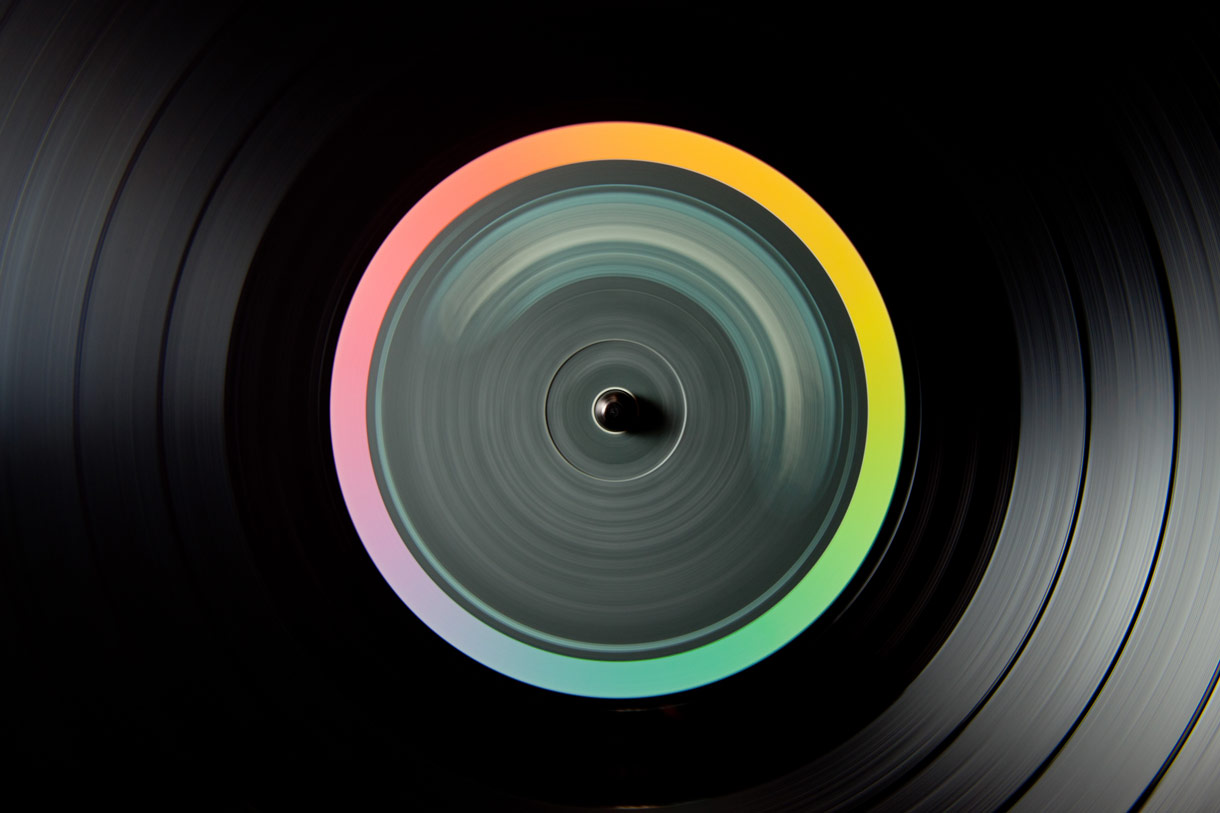
What does a typical day look like for you?
Recently, my days have started with waking up and going to work out with a trainer, just to get my blood flowing a little bit. Afterwards, I send out emails and start working on photography. The house I live in doubles as my studio, so I usually do a lot of shooting at home.
Do you keep normal work hours?
No, it’s always different. I think that’s what’s so good about freelancing: if I want to randomly go out downtown or visit a museum for inspiration, I can. It’s great not having regular work hours.
How often do you travel?
I travel whenever I need to go out for a job. If I go to another city, it’s usually because I’m working, but I’ll stay longer if my friends are there. It depends: I haven’t traveled in about three weeks, but before that it had been two months since I had gone anywhere. It can be pretty sporadic.
What music are you listening to right now?
I usually just listen to anything Rdio tells me my friends are listening to, but I occasionally find random mixes online if I get sick of my Rdio catalog. Lately, I’ve been listening to a band called Tune-Yards, which I am so, so amazed with; and I’m obsessed with Sufjan Stevens. I also listen to a lot of Tycho because there aren’t any words, so I can go into a trance and design. I love it.
Do you have any favorite movies or TV shows?
I like any movies by Wes Anderson: I want to live life like that. As a photographer, I want to shoot like that man shoots his movies. I’m always inspired by The Royal Tenenbaums, or any of his films.
As for TV, I’m obsessed with Survivor. (laughing) I don’t know why, but a small group of friends and I just love it.
Would you ever go on Survivor?
If I keep going to the gym, I could be on Survivor. My friends and I say that we will plan it out so that we’re on the same season together, but we won’t tell anybody we know each other. Then we can all form an alliance and vote everyone else out!
Do you have any favorite books?
My favorite book would have to be The War of Art by Steven Pressfield. I read it all the time because he talks about resistance, which helps me whenever I am procrastinating. That book jump-starts anything I want to do. It’s awesome.
It’s so easy to procrastinate, but the perfect time to start on something never arrives. If you don’t just do it, you’ll end up putting it off forever.
Totally. A lot people with full-time jobs want to do something else, but it’s hard. It’s hard to come home from work with the desire to make something; who wants to make anything after a nine-hour work day? It can be hard to start something, even when you know what to do. Those are the times when you just have to go for it and do what you love to get yourself into that mindset.
Do you have any favorite foods?
I love tacos. My favorite spot in Chicago is a little Mexican shop called Carmela’s Taqueria, but my friends and I usually go to Big Star. When I visited Austin, I was in taco heaven: they have breakfast tacos, and I think that is just ridiculous. I loved it so much.
What kind of legacy do you hope to leave?
The legacy I would like to leave is one of someone who tried to create something that he had never seen before. I want people to see things in a different light, to look at everyday objects in a different way. When people see a book or a hill, I want them to think, “I’ve seen these before, but I’ve never perceived it this way.” I would like people to look at my work and know that I saw the world differently.
“Discovering your voice is the best feeling…Experiment, find your voice, and don’t be afraid to try something different.”
